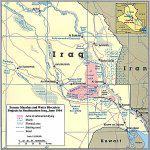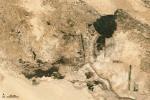Thinking about Iraq would not automatically conjure up images of peace, tranquillity and places where people and wildlife live respectfully together. However, as early as 1980, Southern Iraq was home to one of the world's most important wetlands, a vast area of natural marshland about the size of Yorkshire.
However, in the 1990s the marshes were drained by Saddam Hussein who was trying to eradicate the native Marsh Arab tribes. Using a system of carefully built canals throughout the marshes (including the largest known as the Glory River), and damming the rivers that fed them, the water quickly disappeared and the entire area was turned into desert.
This had a devastating impact on all life in the area from the local tribes who were now homeless and without anywhere you find food and fresh water, to the enormous variety of bird life that commonly used the marshes as a stop-off point when migrating between climates. This crucial migration corridor had now almost completely disappeared.
Since Saddam though, many people both native to the area and from across Iraq, are desperate to begin working on re-flooding the marshes in the hope that this beautiful natural habitat would return once more and to not only re-generate the life there, but also to bring eco-tourism into this part of the Middle East.

Marsh Draining
1994

Marsh Rebuilding
2000 - 2009

